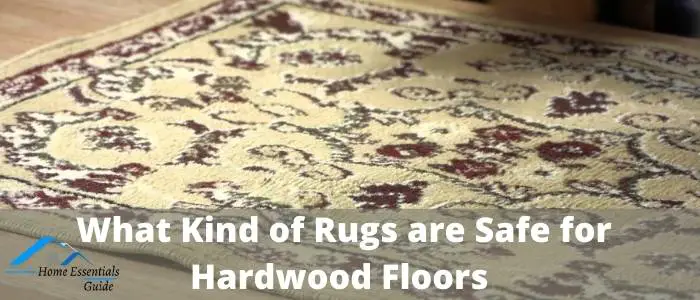Turkish and Persian rugs have notable differences in design and construction. Persian rugs often showcase intricate floral and curvilinear designs, while Turkish rugs tend to feature more geometric patterns and motifs.
Both types of rugs are highly valued for their beauty and craftsmanship, but the difference in design aesthetics sets them apart. Additionally, the knotting method used in Turkish and Persian rugs differs, with Turkish knots being symmetrical and Persian knots being asymmetrical.
These differences contribute to the unique characteristics and styles of Turkish and Persian rugs, making them distinct and sought-after pieces in the world of Oriental rugs.
Design
In the world of handcrafted rugs, one of the key differentiating factors between Turkish and Persian rugs lies in their unique designs. Let’s explore the distinct design elements that set these two styles apart.
Floral And Curvilinear Designs In Persian Rugs
Persian rugs are renowned for their intricate and elegant floral and curvilinear designs. These rugs often feature elaborate motifs inspired by nature, such as intricate floral patterns, flowing vines, and delicate arabesques. The meticulous attention to detail and the use of vibrant colors create a mesmerizing visual appeal, making Persian rugs a timeless classic in interior decor.
Geometric Patterns And Motifs In Turkish Rugs
On the other hand, Turkish rugs are characterized by their bold geometric patterns and motifs. These designs often include intricate geometric shapes, such as medallions, diamonds, and tessellations, reflecting the rich heritage and cultural influences of the region. The use of contrasting colors and strong, angular lines gives Turkish rugs a distinct and captivating aesthetic that appeals to aficionados of traditional, tribal motifs.
Construction
Turkish and Persian rugs showcase distinct features in their construction; Persian rugs boast intricate floral designs, while Turkish rugs exhibit geometric patterns. Another notable difference lies in the knotting method, with Turkish rugs featuring symmetrical knots with two small bumps.
Each rug tells a unique story, making vintage Turkish rugs highly valuable.
Knotting Methods: Persian Rugs
Knotting Methods: Turkish Rugs
In terms of construction, one of the main differences between Turkish and Persian rugs lies in their knotting methods. Persian rugs are known for using the symmetrical knotting technique, also known as the Persian or Senneh knot. This knotting method involves looping the yarn around two adjacent warp threads and then pulling it through to form a knot. The yarn is then cut and the ends are tied, creating a dense and durable pile. Persian rugs often have a higher knot density, resulting in intricate designs and fine details.
On the other hand, Turkish rugs primarily use the asymmetrical knotting technique, also called the Ghiordes or Turkish knot. In this method, the yarn is wrapped around one warp thread and then pulled through to form a knot. The yarn is then cut, leaving a single strand as the knot. Turkish rugs tend to have a lower knot density compared to Persian rugs, resulting in bolder and more geometric designs.
Materials
When it comes to Turkish and Persian rugs, one of the key differences lies in the materials used. These materials not only affect the durability and longevity of the rugs but also contribute to their unique aesthetics. Let’s dive deeper into the traditional materials used in Turkish and Persian rugs.
Traditional Materials Used In Turkish Rugs
Turkish rugs, also known as Anatolian rugs, are crafted using specific materials that have been passed down through generations. The primary material used in Turkish rugs is wool. Turkish artisans prefer using high-quality wool sourced directly from local sheep due to its durability, natural warmth, and resistance to dirt and stains.
In addition to wool, Turkish rugs often incorporate other natural materials such as cotton and silk. Cotton is commonly used to create the foundation and weft of the rug, providing a strong base for the intricate designs. Silk, on the other hand, is reserved for luxurious Turkish rugs, adding a touch of elegance and sheen.
Traditional Materials Used In Persian Rugs
When it comes to Persian rugs, artisans have their own set of preferred materials. Traditional Persian rugs utilize wool as the primary material, much like Turkish rugs. However, what sets Persian rugs apart is the use of a specific type of wool called Kurk or Kork wool. This type of wool is derived from specific breeds of sheep and is renowned for its fine texture and sheen.
Similar to Turkish rugs, Persian rugs also incorporate cotton and silk. Cotton is used in the foundation and weft of the rug to provide stability, while silk is used for highlighting intricate details and creating a lustrous finish.
| Turkish Rugs | Persian Rugs |
|---|---|
|
|
Both Turkish and Persian rugs exhibit exceptional craftsmanship and attention to detail, but the choice of materials adds a distinctive touch to each style. Whether you prefer the warm and resilient wool of Turkish rugs or the fine and lustrous Kurk wool of Persian rugs, it’s clear that both types of rugs offer a rich sensory experience.
Artistry
One of the defining characteristics of Turkish rugs is their intricate designs and vibrant colors. These rugs often feature geometric patterns and motifs that showcase a high level of craftsmanship.
Both Turkish and Persian rugs hold significant artistic value. Turkish rugs are renowned for their detailed artwork, reflecting centuries-old traditions and requiring exceptional skill and patience in their creation. Persian rugs, on the other hand, are known for their elaborate floral and curvilinear designs, each telling a unique story.
Cultural Significance
Turkish and Persian rugs hold great cultural significance and are renowned for their intricate designs and craftsmanship.
Historical And Cultural Context Of Turkish Rugs
Turkish rugs are steeped in history, dating back centuries and reflecting the rich cultural heritage of the region.
Historical And Cultural Context Of Persian Rugs
Persian rugs have a long and storied past, with their designs often symbolizing deeper cultural meanings and traditions.
Value
Turkish and Persian rugs differ in their intricate designs; Persian rugs boast elaborate floral patterns, while Turkish rugs feature geometric motifs. Another notable contrast lies in the knotting technique used, with Persian rugs utilizing asymmetrical knots and Turkish rugs employing symmetrical knots, adding value and uniqueness to each piece.
Appreciating The Value Of Turkish Rugs
When it comes to the value of Turkish rugs, it is undeniable that they hold a special place in the world of Oriental rugs. Each Turkish rug is a masterpiece, with intricate designs and beautiful colors that showcase the skill and patience of the craftsman. These rugs are not just floor coverings; they are considered artworks and prized possessions of many people. One of the factors that contribute to the value of Turkish rugs is their authentic materials sourced directly from the land. Each rug tells its own story and carries its own character, making it a unique and valuable piece. From the wool used in the pile to the natural dyes that create the vibrant colors, every element of a Turkish rug is carefully chosen to create a masterpiece that will last for generations. In addition, the craftsmanship and technique used in creating Turkish rugs adds to their value. The art of making Turkish rugs is a centuries-old tradition that requires a great deal of skill and expertise. From knotting the pile to the intricate patterns and motifs, every step in the process is done with precision and care. This attention to detail ensures that each Turkish rug is of the highest quality and will stand the test of time. It is also worth mentioning that the scarcity of authentic vintage Turkish rugs further enhances their value. These rugs are not mass-produced, but rather handmade by talented artisans. This limited supply makes them highly sought after by collectors and rug enthusiasts alike.Appreciating The Value Of Persian Rugs
Like Turkish rugs, Persian rugs also have a significant value in the world of Oriental rugs. These rugs are known for their elaborate floral and curvilinear designs, which are a testament to the Persian culture and heritage. The intricate patterns and motifs found in Persian rugs are a reflection of the rich history and traditions of the region. One of the reasons why Persian rugs are highly valued is their craftsmanship. Just like Turkish rugs, Persian rugs are handmade using traditional techniques that have been passed down through generations. The weavers carefully knot each thread to create the pile, resulting in a rug that is not only beautiful but also durable. This level of craftsmanship ensures that Persian rugs can last for decades, if not centuries. Another factor that adds to the value of Persian rugs is the use of high-quality materials. Persian rugs are typically made from wool sourced from local sheep, which is known for its softness and durability. The natural dyes used in Persian rugs create vibrant colors that are resistant to fading over time. These authentic materials contribute to the overall value and longevity of Persian rugs. Lastly, the history and cultural significance of Persian rugs make them highly valued. These rugs have been a part of Persian culture for centuries and are considered a symbol of status and prestige. Owning a Persian rug is not just about having a beautiful piece of art, but also about preserving a piece of history. In conclusion, both Turkish and Persian rugs have their own unique value. While Turkish rugs are prized for their intricate designs and authentic materials, Persian rugs are recognized for their elaborate patterns and cultural significance. Whether you choose a Turkish rug or a Persian rug, you can be assured that you are investing in a valuable piece of art that will enhance the beauty of your space for years to come.Frequently Asked Questions For What Is The Difference Between Turkish And Persian Rugs?
Are Turkish Or Persian Rugs Better?
Turkish and Persian rugs have different designs and construction. Persian rugs feature floral and curvilinear designs, while Turkish rugs have geometric patterns. Both are valuable and beautiful in their own way.
How Can You Tell If A Rug Is Turkish?
You can tell if a rug is Turkish by checking for geometric patterns and motifs in the design. Turkish rugs often feature these, while Persian rugs tend to have elaborate floral and curvilinear designs. Additionally, Turkish rugs are valued for their intricate designs and centuries-old tradition of craftsmanship.
What Is Special About Turkish Rugs?
Turkish rugs are renowned for intricate designs and beautiful colors, considered valuable artworks. They require skill, patience, and a time-consuming process to create. Each rug is a unique expression, making vintage Turkish rugs incredibly valuable. Turkish rugs typically feature more geometric patterns, distinguishing them from Persian rugs.
Are Turkish Rugs Valuable?
Turkish rugs are valuable due to their intricate designs, beautiful colors, and authentic materials. Each rug has its own unique story and character, making vintage Turkish rugs highly sought after. Additionally, they are considered artworks and are crafted with great skill and patience.
Conclusion
Etween Turkish and Persian rugs? While both Turkish and Persian rugs are exquisite pieces of art, they have distinct differences in their design and construction. Persian rugs are known for their elaborate floral and curvilinear patterns, while Turkish rugs often showcase more geometric motifs.
Additionally, the knotting methods used in these rugs differ, with Turkish rugs featuring a symmetrical knot with two small bumps. Understanding these differences can help you choose the perfect rug for your home or collection.


